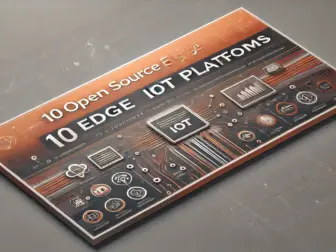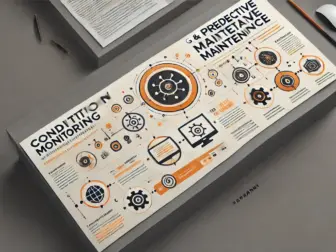Tag - Industry 4.0
Blog, Edge Computing and Data Analytics, IoT Tools and Platforms , September 14, 2024 , AI at the edge, automation, Cloud Integration, Connectivity, Device management, digital transformation, Distributed Computing, Edge Computing, Edge IoT, Industry 4.0, IoT Platforms, Open Source, Smart Devices, Technology Innovation
Blog , February 18, 2024 , 5G, Future of IoT, IIoT, Industrial IoT, Industry 4.0, internet of things, iot, IoT sensor, IoT technology, small and medium-sized enterprises, SMEs
Embracing the Future: How Industry 4.0 is Revolutionizing Manufacturing and Business
Embracing the Future: How Industry 4.0 is Revolutionizing Manufacturing and Business
The term ‘Industry 4.0’ heralds the fourth industrial revolution, a new era characterized by the integration of digital technology into the manufacturing sector. This transformative movement leverages the power of advanced data analytics, connectivity, and automation to create smart factories that are efficient, adaptable, and sustainable. With the inception of Industry 4.0, the boundaries between physical and digital worlds are increasingly blurred, setting the stage for unprecedented levels of productivity and innovation.
At the core of Industry 4.0 are cyber-physical systems (CPS) that merge physical machinery with networked sensors and software, allowing for communication and real-time coordination between different components of the production process. This synergy is facilitated by the Internet of Things (IoT), which connects machines, workpieces, and systems to collect and analyze data, enabling predictive maintenance, self-optimization, and autonomous decision-making.
Another critical aspect of Industry 4.0 is the use of big data analytics. By harnessing vast amounts of data generated by connected devices, companies can gain deep insights into their operations, identify inefficiencies, and drive process improvements. This data-driven approach empowers businesses to respond rapidly to changes in market demands and supply chain disruptions, enhancing their agility and competitive edge.
Additive manufacturing, or 3D printing, is another revolutionary technology under the Industry 4.0 umbrella. It has the potential to disrupt traditional manufacturing methods by enabling on-demand production, reducing waste, and allowing for the creation of complex, lightweight structures that were previously impossible to fabricate using conventional techniques.
Robotics and automation also play a pivotal role in Industry 4.0. Collaborative robots, or ‘cobots,’ are designed to work alongside humans, taking over repetitive, dangerous, or precision tasks, thereby enhancing safety and efficiency. The increasing sophistication of these robots, driven by advancements in artificial intelligence (AI) and machine learning, is enabling them to handle more complex tasks and make independent decisions based on real-time data.
The digital thread is another key concept, referring to the communication framework that allows a connected data flow and integrated view of an asset’s data throughout its lifecycle. This seamless thread of data and information enables different stages of the production process to be closely interlinked, from initial design through manufacturing, to service and decommissioning.
While the benefits of Industry 4.0 are vast, there are also significant challenges to overcome. These include ensuring the security of interconnected systems against cyber threats, addressing concerns over job displacement due to automation, and managing the upskilling of the workforce to handle more sophisticated technology.
In conclusion, Industry 4.0 represents a fundamental shift in the way industries operate. It is not simply about adopting new technologies but involves a holistic transformation of organizational structures, processes, and corporate cultures. By embracing Industry 4.0, businesses can improve efficiency, flexibility, and innovation, thereby securing their place in the competitive landscape of the future. As this revolution continues to unfold, it is clear that the companies willing to invest in these cutting-edge technologies and adapt to their transformative potential will be the ones to thrive in the era of smart manufacturing.


